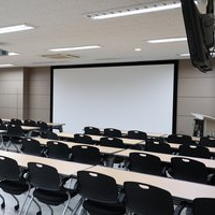Facilities
Creating a Great Learning Environment
The atmosphere of a school is largely dependant on the quality of its facilities. This page gets into the specifics about where your school lives.
Contents
Planning a Space for Your School
Learning can happen anywhere. As a new school this means you have a wide range of potential spaces where you might launch your school. But there are likely requirements you need to meet based on your objectives, and for compliance with regulations.
In this section we ask questions designed to help you define your requirements for your school facilities, and outline many of the common needs that should be taken into consideration as you prepare to open your school.
Software That Simplifies & Empowers Your School
Attract students, satisfy parents, and grow your school! With Twine, we keep the administration easy so you can focus on other things.
Every School Needs Great Software
Twine helps schools simplify their administration, automate scheduling/staffing, and lesson the load placed on teachers and administrative staff. Twine also helps with enrollment, marketing, and more. See what Twine can do:
Parent Communications
Informed parents become engaged parents and engaged parents can supercharge your school.
School Management
Twine makes it easy for teachers and administrators to do everything they need to do.
Online Classrooms
Educate, collaborate, and discuss with integrated online classrooms powered by Twine.
What Types of Buildings/Spaces are Ideal for Schools?
There is a beautiful thing about designing your own private school – there is no right or wrong answer to this question. Schools exist in office buildings, in churches, in homes, and in multi-million-dollar custom-built campuses. In the bigger scheme of things, the building you’re in does not define the quality of your school or the opportunities you’re able to provide for your students. Don’t get too caught up in what is ideal and know that you can always modify your space and/or relocate as your school grows and your needs change.
What Kind of Space Do You Need?
So, you’ve thought about your budget and the money you might need to set aside for a physical location to have your school. What other considerations should you be thinking about?
How Much Room Do You Need?
If your initial student enrollment is relatively low, it really changes the game as far as how much physical space you need for your school. If you’ve got a hundred (or hundreds) of students, you’re obviously going to need more space.
Start to think about what is realistic for the size of the school you’re starting off as. You can always expand or move once you’ve outgrown your current location.
Do You Need a Kitchen or Lunch Space?
If you’re going to be providing food for your students, you open up a whole bunch of things to think about and find out. In addition to the physical space for a kitchen and lunch room and the equipment and seating that goes along with it, you’ll need to make sure you are in compliance with any requirements for storing, preparing and serving food. Most counties or states do require inspections of kitchens, though some jurisdictions have different requirements for schools than for restaurants. You’ll want to check the state pages for more information and consult local health department officials as well.
Note also: some funding is available from the National School Lunch Program for offering lunches to students who qualify. You’ll find specific information about that on your state page, too.
Do You Need Space for Physical Education or Outdoor Activities?
Depending on the age of your students, and in some cases the state regulations on recess/physical education time, you may need this kind of space. In some areas use of public parks or access to playgrounds at nearby churches or other facilities might be an alternative to maintaining your own outdoor space.
Your state may also have requirements when it comes to fencing in outdoor spaces for young students, so this is something to consider as well.
Can You Get Creative or Share Space?
Depending on the space you need and your connections in the community, you may be able to sublease space for your first year or two until your school grows enough to expand your location. If your school has a religious affiliation – or even if it doesn’t - sometimes a local church or temple will have classroom space that is unused during the week.
You might find a local business that has extra conference rooms or other spaces that can be rented at a reduced rate. Even empty commercial spaces for offices, warehouses and retail have been successfully used for schools.
Don’t be afraid to explore nontraditional options, rather than running out and buying or leasing space in a traditional school building right away.
Facility Requirements
The U.S. Department of Education does not regulate the private school establishment process, and you do not need any approval from the federal government to get started. Some federal funding programs require that schools meet certain requirements; these are on a case-by-case basis and are discussed in the funding section of this guide.
Can You Get Creative or Share Space?
Legal requirements for facilities in the area where you are hoping to open your school can sometimes be more difficult to pin down.
Your local municipality is usually responsible for fire codes, number of exits, accessibility for people with physical disabilities, number of bathrooms, and many other specifics for schools. In many cases, an inspector will have to come by prior to school opening.
Your best resource for ensuring all of these requirements are met is to reach out to your municipality, or in some instances, the county, and ask about building codes and requirements for schools. They are usually more than happy to provide you with the specifics required by law in your area.
Safety, Comfort, & Security
School security is an important consideration, both in the budgeting process, and as you begin to prepare for the first day of classes.
A common starting place for thinking about this is the drop-off and pick-up procedures for your school. How is your pick-up area configured? Is there a safe place for cars to line up and for students to wait? Who will check students in and out? How will you keep track of who is and isn’t allowed to pick up a student? (Note, this is an area where good school management software like Twine can help.)
Once students are safely dropped off, how do they access the school? Does everyone come in one main entrance, or will they be streaming in from different areas? Are the doors locked once school starts? Who will be responsible for watching the students as they walk into the school?
Another consideration is how school visitors will be handled. Do you have a sign-in process for parents and other guests? Will they be required to wear name badges to identify themselves?
Complying with safety and accessibility requirements is also reinforced by some laws. What are your local codes for fire systems, emergency exits, ADA accessibility, locations and numbers of bathrooms and sinks? Many of these considerations will come to light as you prepare for inspection prior to opening, but there may be things you need out of your school space that aren’t required by code. For instance, in some older buildings, ADA compliance can be waived allowing narrow halls or small bathrooms. This may work for you now, but what will you do if you have a wheelchair-bound student enroll?
What Kind of "Stuff" Do You Need?
Technology
Hopefully technology came up previously, as you were working on aspects of your curriculum and business plan. In well-planned schools, technology is used for a combination of back-office and operational tasks, as a tool for marketing and parent communications, and to support student learning. From a purely physical standpoint, common considerations include:
Helping Educators Do the Work That Matters

Guide Quick-Nav

Introduction
We’ve developed these 10 topics to help you along the way. Take them all in at once, or start with the areas most relevant right now.

School Identity
There’s plenty you can do to develop your own brand, starting right from your personal ideals and goals for your school.

Curriculum
Our curriculum pages include ideas on where to go to find materials, and different associations and educational models you may want to consider.

Legal & Operating Requirements
You need to know the requirements at both the federal level and for your state. Here are the basic details for every state.

Funding & Finance
Here we share ideas for possible funding sources, and ways you might be able to start with less than you thought necessary.

Business Plan & Budget
Having a plan for how you’ll operate and a budget to predict and allocate funds is critical for all businesses, schools included. We’ve pulled together resources here to help with both.

Facilities
What facilities are right for your school? We encourage new schools to get creative, and have compiled some considerations to take into account.

Staffing
How can you find and recruit the right talent for your school? What qualifications or certifications are required?

Policies & Procedures
Thinking about more than just a student handbook and conduct code, we've included recommendations & templates to help you develop your school policies & procedures

Marketing & Online Presence
Having a plan for how you’ll operate and a budget to predict and allocate funds is critical for all businesses, schools included. We’ve pulled together resources here to help with both.

Associations
What facilities are right for your school? We encourage new schools to get creative, and have compiled some considerations to take into account.
